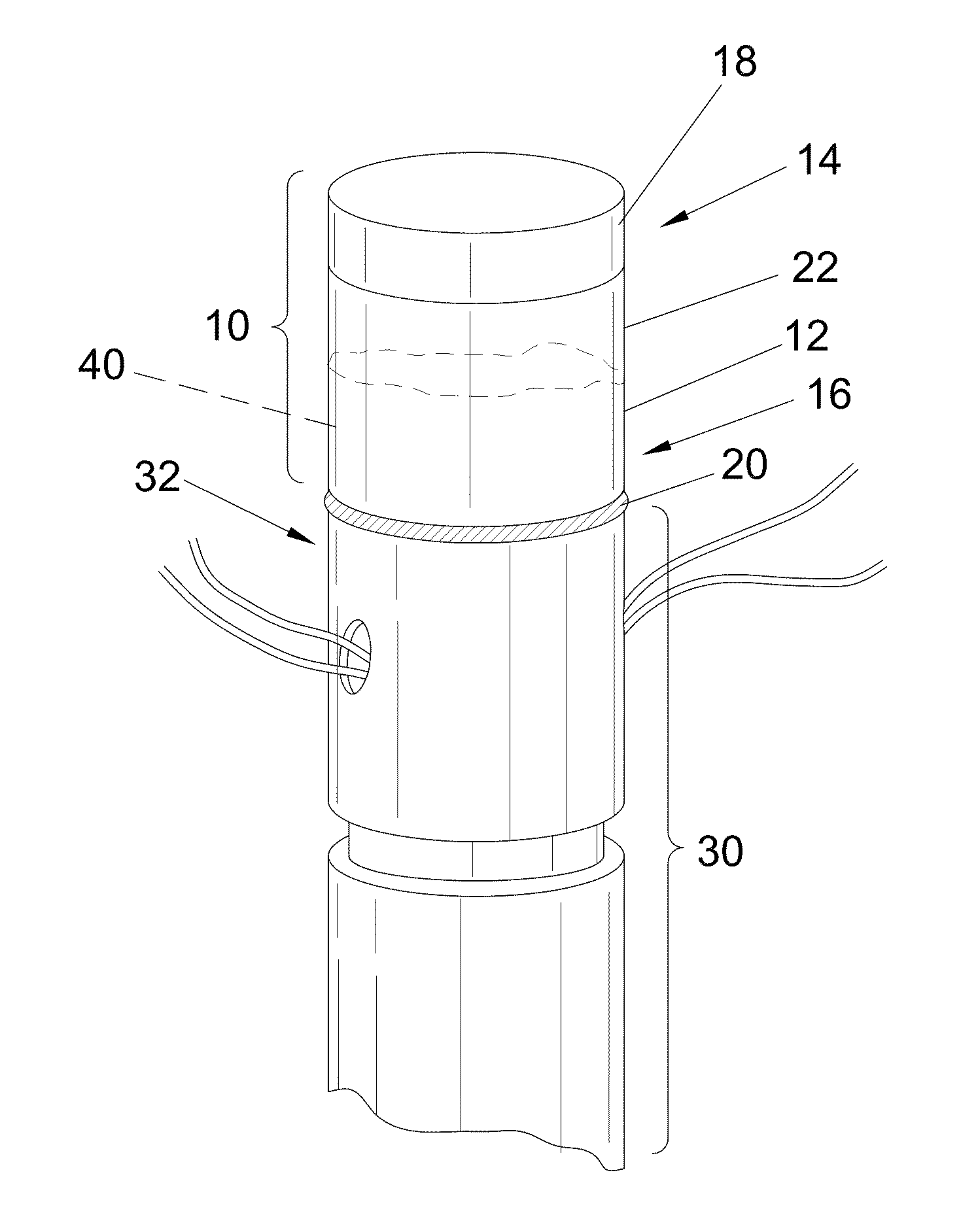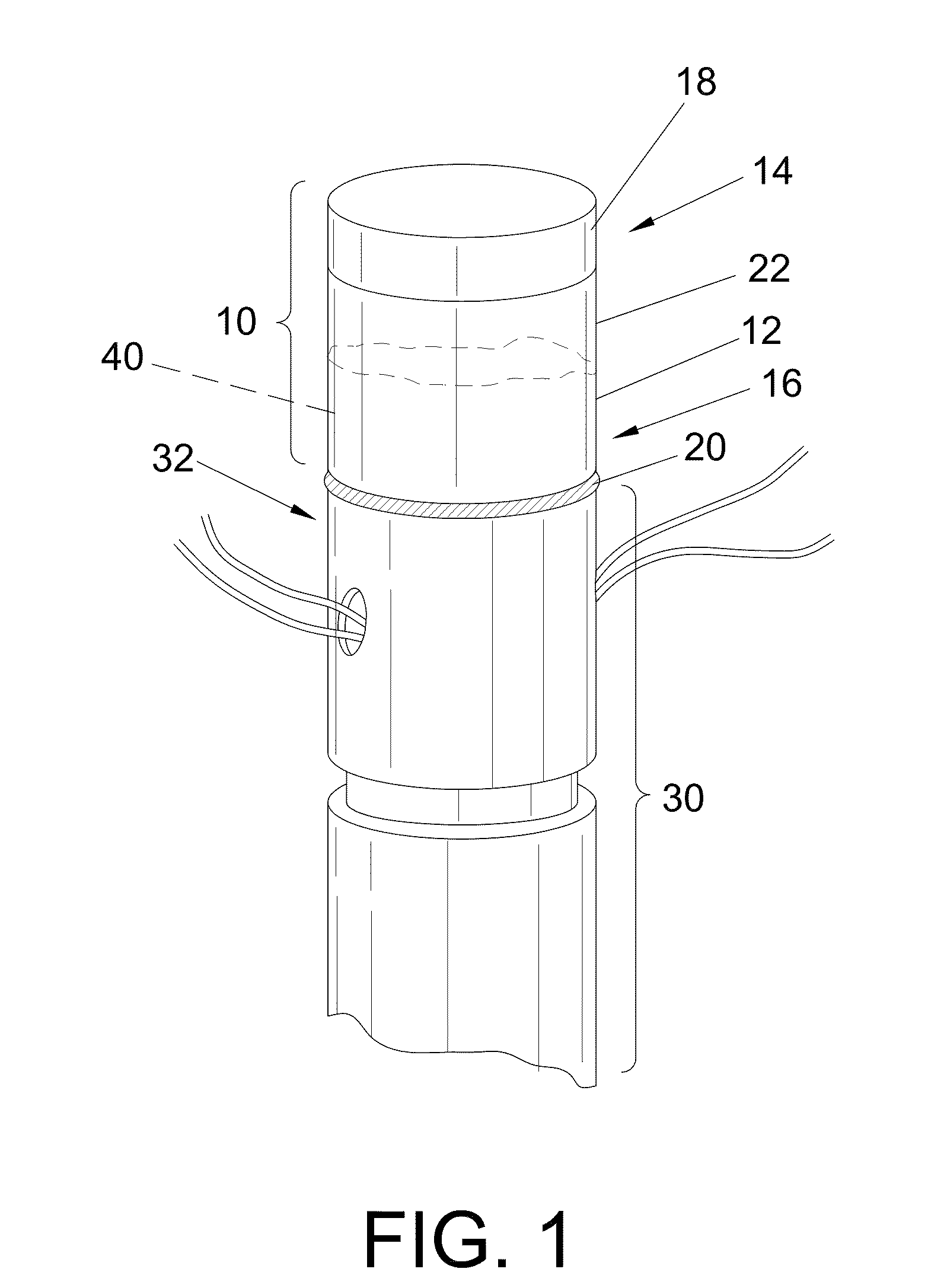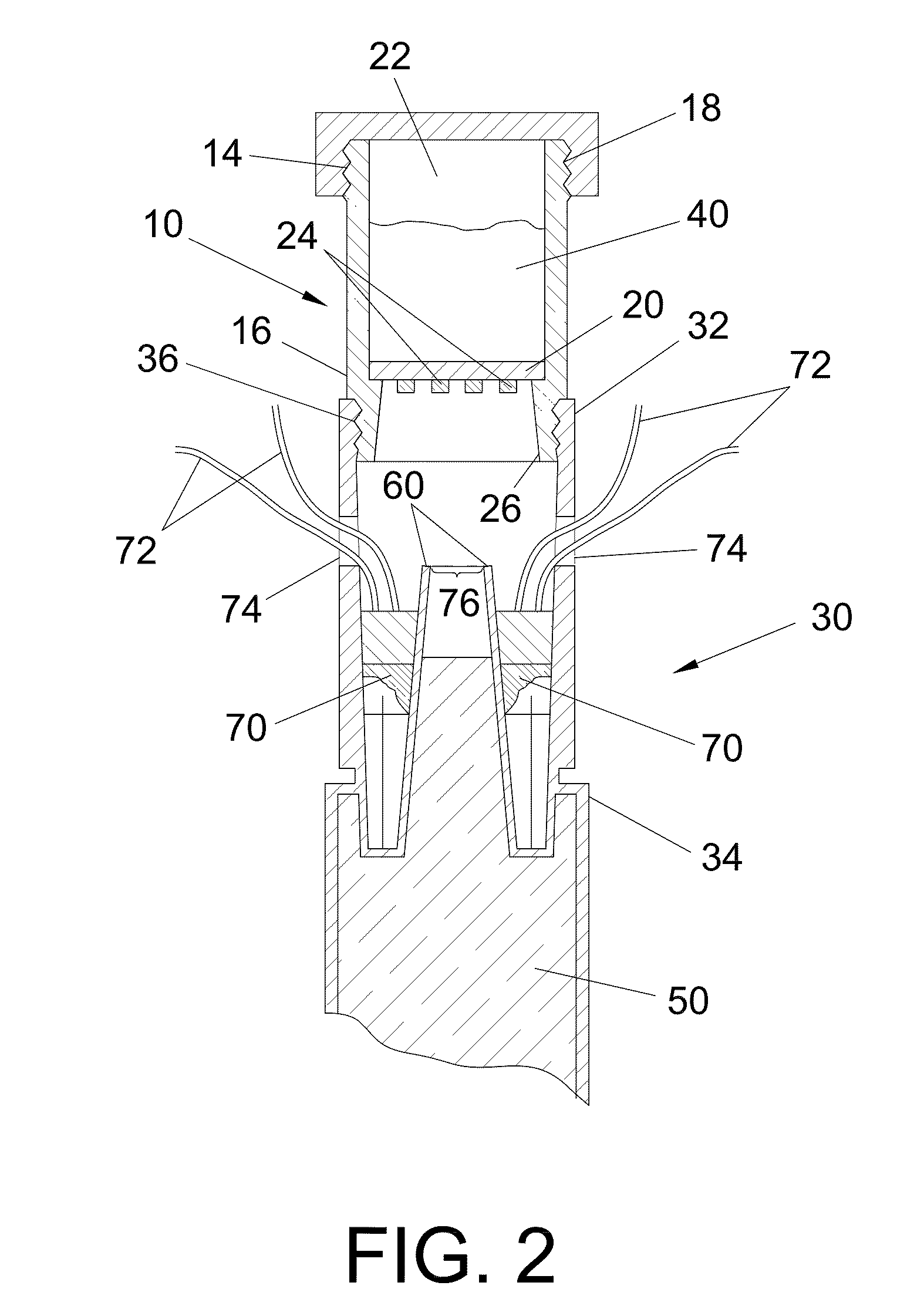Systems and methods for chemical and/or mechanical remediation of nitro compounds and nitrate esters
a technology of nitro compounds and esters, applied in the field of systems and methods for chemical remediation of explosives, can solve the problems of seismic exploration crews not knowing whether a seismic booster has failed to detonate, explosion risk, and people and animals, and achieve the effect of reducing the possibility of detonation
- Summary
- Abstract
- Description
- Claims
- Application Information
AI Technical Summary
Benefits of technology
Problems solved by technology
Method used
Image
Examples
example 1
[0169]Three SOB booster samples containing 7.5 g of Pentolite were placed in three alkaline solutions to determine an efficacious pH level for a desired chemoremediative reaction. The Pentolite SOB booster samples were placed in the solutions and left undisturbed for ten days, in a locked magazine. The SOB boosters comprised plastic bodies having an open end positioned near the bottom of the booster. An upper, narrow end of the SOB booster comprised a plastic sleeve designed to fit onto a detonator.
[0170]The three alkaline solutions were as follows: 1.71% Ca(OH)2 (300 g) in water resulting in a pH=11.34; 4.67% KOH (300 g) in water resulting in a pH=13-14; and 6.84% NaOH (300 g) in water resulting in a pH=13. Samples were monitored until reactions were deemed complete. Following completion, sample residues were dried and tested on a standard BAM impact hammer, where the material showed impact sensitivity similar to that of PETN. Table 1 below indicates the chemoremediative analysis o...
example 2
[0173]Alkaline hydrolysis of Pentolite with and without a catalyst was performed. Impact analysis showed that NaOH and KOH will hydrolyze TNT without the use of a catalyst but will not change PETN after six months of being in contact with an alkaline solution at pH=13. A catalyst (stannous chloride) was added to the alkaline solution rendering the end product no longer impact sensitive. Stannous chloride may be dissolved in water but is preferably dissolved in a dipolar aprotic solvent with a dielectric constant (∈) greater than 6, such as THF, Methylpyrrolidone or DMF. Solvents such as methanol (∈=33.1) and ethanol (∈=23.8) may also be used. A mixture of dipolar aprotic solvent and water may also be used. One to three parts of stannous chloride was dissolved in an adequate amount of solvent, solvent mixture or water. Subsequently, 3 to 12 parts of sodium hydroxide solution to one part of stannous chloride were added to make the remediation solution.
example 3
[0174]Alkaline hydrolysis of Pentolite with and without a catalyst was performed. Impact analysis showed that NaOH and KOH will hydrolyze TNT without the use of a catalyst but will not change PETN after six months of being in contact with an alkaline solution at pH=13. A catalyst (mixture of ferrous chloride and stannous chloride) was added to the alkaline solution rendering the end product no longer impact sensitive. Remediation solution contained 3-15% FeCl2.4H2O, 5-25% HCl, and 0.5%-5% SnCl2 dissolved in water.
PUM
 Login to View More
Login to View More Abstract
Description
Claims
Application Information
 Login to View More
Login to View More - R&D
- Intellectual Property
- Life Sciences
- Materials
- Tech Scout
- Unparalleled Data Quality
- Higher Quality Content
- 60% Fewer Hallucinations
Browse by: Latest US Patents, China's latest patents, Technical Efficacy Thesaurus, Application Domain, Technology Topic, Popular Technical Reports.
© 2025 PatSnap. All rights reserved.Legal|Privacy policy|Modern Slavery Act Transparency Statement|Sitemap|About US| Contact US: help@patsnap.com



